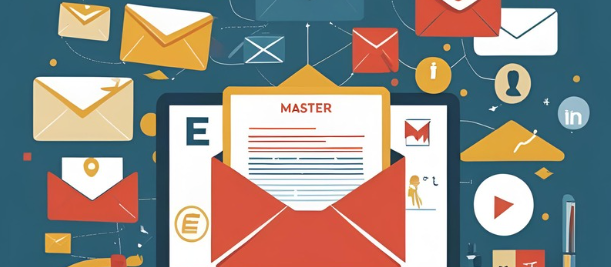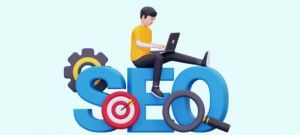In this digital world, email marketing is one of the most effective and reliable strategies to reach, engage, and convert our audience. It is cost-effective, measurable, and, when done in the right way it is very powerful.
In this blog, we will learn about-
- What email marketing is
- Benefits of email marketing
- Challenges of email marketing
- Different types of email campaigns
- Frequently asked questions
What is Email Marketing?
In Email marketing, we send emails to a list of our customers to promote products, share news or new launches to educate them. It is a direct form of marketing that allows businesses to communicate personally and professionally with our target audience.
Whether it’s a welcome message, a discount offer, a newsletter, or a survey, emails help us to stay top-of-mind and build customer loyalty.
Advantages of Email Marketing
Email marketing has many benefits that make it a very right choice for every business/ brand. Some of its advantages are as follows:
1. Cost-Effective:
Email marketing is very much affordable as compared to social media ads or traditional advertising. We don’t need a heavy budget to reach thousands of people. We can even reach a worldwide audience.
2. Personalized Communication:
With this, we can send personalized emails to our customers. With the help of automation features, emails can be mailed to each customer according to their behavior, interests, or location, which will make them feel special and remind them of us or our brand. Just like we receive mails from myntra, nykaa etc.
3. High ROI (Return on Investment):
According to the internet, email marketing gives an average ROI of $36 for every $1 spent which makes it one of the most profitable marketing platforms.
4. Easy to Track and Measure:
We can easily track and measure our performance with the help of sites like Mailchimp, Constant Contact, or HubSpot that provide detailed analytics like open rates, click-through rates, and whether our customers are buying something or not, after receiving the mail.
5. Automation and Scalability:
With the help of automation tools, we can send thousands of personalized emails without putting any effort and it allows us to set up campaigns once and let them run automatically.
6. Direct Access to Your Audience:
Unlike social media algorithms, emails go straight to the user’s inbox, giving us full control over our message delivery.
Disadvantages of Email Marketing
While email marketing has many benefits, it also has some challenges:
1. Spam Issues:
Poorly written or irrelevant emails will always end up in the spam folder of our customers account. We should always follow best practices and avoid spammy words.
2. Design and Content Challenges:
Without using the right tools or experience it is really very difficult to create attractive, mobile-friendly, and error-free emails.
3. List Management:
It takes time to keep our email list clean and engaged. We must regularly remove inactive users and update our contact information.
4. Data Privacy Regulations:
We must follow laws like GDPR or CAN-SPAM, which require user consent and data protection. We should not violate these rules otherwise it will lead to penalties.
5. Unsubscribes and Bounces:
People may unsubscribe if our emails are too frequent. They may find it irrelevant if we are sending them mails at poor timing. As a result, high bounce rates can hurt our reputation.
Types of Email Marketing with Examples:
Now, we will get to know different types of email marketing which will help us to design effective campaigns for our various business goals. Here are the most common types:
1. Welcome Emails:
Purpose: To meet and greet new subscribers or customers and introduce our brand.
Example:
“Hi “their name”, welcome to our community! Here’s a 20% discount code, avail this with your first shopping.”
2. Newsletter Emails:
Purpose: To provide regular updates, news, blog posts, or content to our audience.
Example:
“Top 10 trends in digital marketing this month + free guide/ ebook!”
3. Lead Nurturing Emails:
Purpose: To guide potential customers through the sales funnel by sending useful content, case studies, or product information.
Example:
“You downloaded our guide on SMM (social media marketing). Here’s the next step to boost your traffic!”
4. Confirmation Emails:
Purpose: To confirm a user’s action for signup, order, or booking something.
Example:
“Thanks for signing up! Your account has been successfully created.”
5. Dedicated Emails:
Purpose: To focus on one specific offer, event, or announcement.
Example:
“Limited-time zoom meeting on email marketing! Register now.”
6. Invite Emails:
Purpose: To invite users to webinars, events, or special sales.Example:
“Join our live workshop on SEO- only 100 spots available!”
7. Promotional Emails:
Purpose: To promote a sale, discount, new product, or holiday offer.Example:
“Flash Sale: Get 65% off on all digital courses – only 2 days left!”
8. Survey Emails:
Purpose: To collect feedback or opinions from your audience.
Example:
“We’d love your feedback! Tell us how we’re performing and win a free gift/ offer.”
9. Seasonal Marketing Emails:
Purpose: To give offers/ discounts for holidays, festivals, or seasonal trends.
Example:
“Celebrate Diwali with us- an exclusive festive collection is coming up!”
Email Marketing FAQs
Q1: How to start email marketing?
Answer:
We have to follow the steps given below:
- We have to choose an email marketing tool like Mailchimp.
- Then build the email list by collecting customers.
- Then classify the list based on interests or behaviors.
- Then create a content calendar and design engaging emails.
- The final step is to track results and optimize it over time.
Q2: How important is the email subject line?
Answer:
Extremely important! The subject line is the first thing a recipient/ our customer sees, and it will decide whether they will open the email or not. A good subject line should be:
- Should be clear and concise
- Should be related to the email content
- Should be emotionally appealing or curiosity-driven to encourage them to open the mail
- Should not be more than 50 characters
Examples:
- “Don’t miss your free guide!”
- “Last chance to register for our master webinar”
- “Your products in your cart are missing you!”
Q3: How do We connect with our audience through email?
Answer:
To build a strong connection:
- Use personalization: Include the user’s name or location.
- Write in a very friendly tone: Make the email feel like a conversation.
- Provide value: Share tips, tools, or solutions to problems.
- Be consistent: Send emails on a regular schedule.
- Ask for feedback: Make your readers feel heard and involved.




